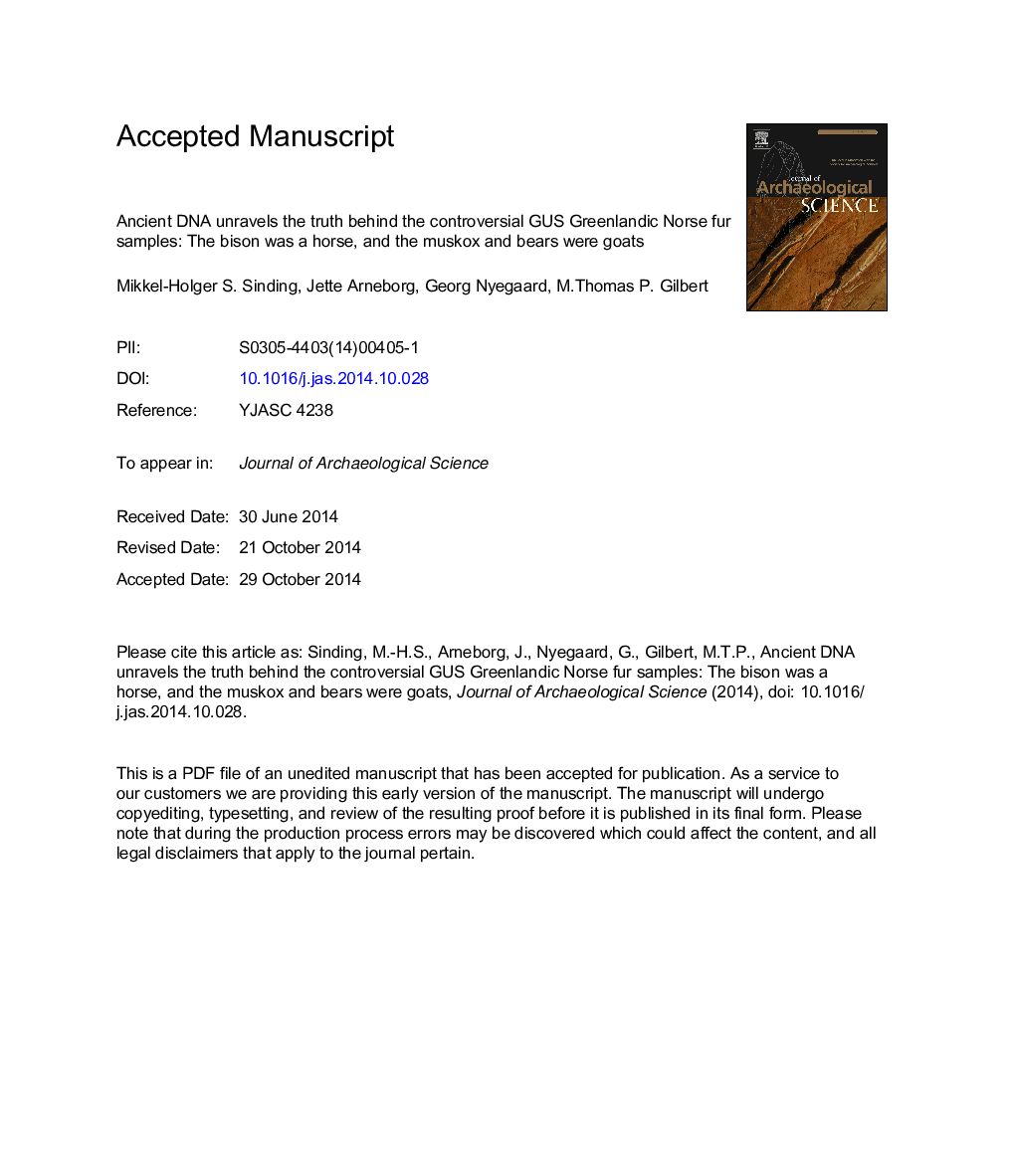| Article ID | Journal | Published Year | Pages | File Type |
|---|---|---|---|---|
| 7442563 | Journal of Archaeological Science | 2015 | 21 Pages |
Abstract
The Norse Greenlandic archaeological site known as 'the Farm Beneath the Sand' (GUS) has sourced many well-preserved and unique archaeological artefacts. Some of the most controversial finds are tufts of hair, which previous morphological-based examination concluded derive from bison, black bear, brown bear and muskox, all species whose natural presence in South Greenland is unlikely. If true, the consequences are potentially significant, as they could imply Viking trading with, or hunting within, North America. To validate these previous findings, we genetically profiled the samples, through mitochondrial 16S DNA analysis. The results revealed that the putative bison was, in fact horse, while the bears and muskox were goat. The results demonstrate the importance of using genetic analyses to validate results derived from morphological analyses on hair, in particular where such studies lead to sensational claims.
Keywords
Related Topics
Physical Sciences and Engineering
Materials Science
Materials Science (General)
Authors
Mikkel-Holger S. Sinding, Jette Arneborg, Georg Nyegaard, M. Thomas P. Gilbert,
